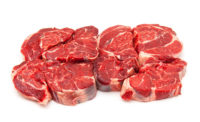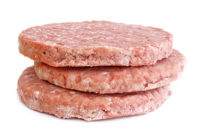From large corporations to small, independent businesses, it is hard to find a modern business that does not have a pledge to become more environmentally sustainable. Businesses concentrating on sustainability are typically lavished with praise while those perceived to not be doing their part may be met with harsh criticism. Today’s media has a tendency to portray agriculture as a major player in greenhouse gas emissions and other environmental problems. This bad reputation is unwarranted and not supported by scientific data.
Over the years, producers have improved the sustainability of raising animals in a variety of ways, long before it was trendy to do so. One of ways farmers have worked to improve sustainability is by adopting the land-management practice of planting cover crops and using them as feed. According to the 2017 U.S. Department of Agriculture (USDA) Census of Agriculture, 15.4 million acres of cover crops were planted in the U.S., an almost 50 percent increase from 2012. Cover crops are commonly planted to reduce soil erosion and improve soil health, but they can also be used as a feedstuff for cattle. One family of cover crops commonly planted in the upper Midwest are known as brassicas, which are planted because of their cold hardiness. This ability to withstand the late fall temperatures of the Great Plains can extend the grazing season beyond traditional grass pasture, resulting in reduced need for producers to haul feed to their cattle. This reduces labor and farm equipment emissions.
While it has become common practice to graze dry cows in these fields, the utilization of brassica cover crops as a feedstuff for weaned calves in the backgrounding phase of production has not been largely studied. Our research objective was to evaluate the impact of a backgrounding diet containing brassica cover crops on live-animal performance, carcass characteristics and meat quality.
This study involved two treatments with 15 weaned steers of similar genetics and production background in each treatment. One treatment involved a traditional Midwestern backgrounding diet of corn silage, ground hay and soybean meal. The other treatment was a backgrounding diet consisting of freshly chopped brassica cover crops including turnips, radish and rapeseed, as well as rye grass. The steers were housed at the South Dakota State University Cow Calf Education and Research Facility and fed using an electronic feeding system that measured feed disappearance and feeding behavior. To achieve similar growth between treatments during the backgrounding phase, the diets were formulated to be nutritionally similar on a dry matter basis, and the steers were pair fed across treatments to receive similar quantities of dry matter. The steers were fed the backgrounding diet for 44 days prior to transitioning to a common step up and finishing diet.
After a common finishing period of 187 days, the steers were harvested at a commercial packing facility at an estimated backfat thickness of 0.4 inches. Standard carcass data including hot carcass weight, ribeye area, backfat thickness and marbling scores were measured, and one strip loin was collected from each carcass. The strip loins were cut into 1-inch thick steaks that were aged three, seven, 14 or 21 days postmortem for evaluation of instrumental tenderness utilizing Warner-Bratzler shear force, and for evaluation of tenderness, juiciness and flavor according to a trained sensory panel. Additional steaks were collected to analyze the degradation of troponin-T and desmin proteins as well as calpain-1 autolysis using Western blots.
Treatment did not affect live-animal performance including average daily gain, dry matter intake, gain-to-feed ratio or body weight when evaluated separately during the backgrounding and finishing phases. When live-animal performance was evaluated from the beginning of the backgrounding phase until the end of the finishing phase, no differences in average daily gain or dry matter intake were observed. A slight improvement in gain-to-feed ratio was observed for the silage-based diet compared with the cover crop diet. The absence of differences in live-animal performance during the backgrounding phase was not surprising because the steers in both treatments were fed nutritionally similar diets and dry matter amounts. There also were no treatment effects for carcass characteristics. A treatment by day interaction was observed for Warner-Bratzler shear force as steaks from the cover crop treatment were more tender than steaks from the silage-based diet at days three and seven postmortem before becoming similar at day 14. Additionally, steaks from the cover crop treatment reached ultimate tenderness by day seven, whereas steaks from the silage-based diet reached ultimate tenderness at day 14.
But the observed differences in tenderness were not explained by data from the Western blot analysis. There was no treatment effect for the abundance of intact desmin or intact or degraded troponin-T. Additionally, there were no treatment effects on the rate of calpain-1 autolysis, which indicates either that the impact calpain-1 had on tenderness formation did not differ among treatments, or the samples collected at day three postmortem were taken too late to observe differences. Data from the trained sensory panel did not detect differences in tenderness, juiciness or flavor between the two treatments.
Overall, these data suggest that a brassica mixture cover crop diet during the backgrounding phase could be a viable management strategy for cattle producers looking to improve their sustainability by utilizing cover crops, as no negative impacts on carcass characteristics or live animal performance were observed. The improvements in tenderness, however, indicate dietary management can affect meat quality even after a common finishing phase. Further investigation is warranted to explain these differences. NP




Report Abusive Comment